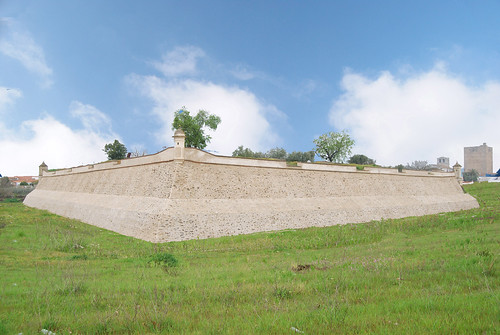
In the province of Badajoz in Spain there is a corner at least curious. It is the people of Olivenza of about 10,000 inhabitants, located almost on the border with Portugal. His curiosity is that, for many years, was on the borderline between the two countries, to belong to the country for quite some time luso. That meant that today we see a Olivenza marked by its geographical location and its history.
It was founded by the Knights Templar in the thirteenth century, and became Portuguese territory with the Treaty of Alcañices 1297. With the reign of the Portuguese Manuel I built many of the important buildings that we see today in the town. But the feared war borders have marked the life of Olivenza and heritage. Since the War of the Oranges in 1801, the troops join Godoy back to the Spanish crown.
The city center is the Plaza de Santa Maria, where stands the effigy of the Church of Santa María del Castillo, a Portuguese renaissance of its own building. I strongly recommend visiting inside the Tree of Jesse with original polychrome figures. Near the church stands the castle of Olivenza, with its tower of homage. From its vantage point you can admire the beauty of the people. Inside you can visit the Municipal Museum Gonzalez-Santana.

The citadel of Olivenza shows the Port of Los Angeles, from which we come to the house of Mercy, where we see further evidence of the church Portuguese art, a beautiful tile. Portuguese is also very beautiful building of the palace of the Dukes of Cadaval, Manueline style of the fifteenth century, right in the Plaza de la Constitution.
Very near here is the shadow of the Church of St Mary Magdalene, the sixteenth century, one of the finest examples of art Manueline. The extraordinary set of tiles and the columns that sustain their circular vessels are remarkable in it.
The former Olivenza preserved sections of the major defensive bulwarks, in which we can contemplate the limits of the medieval citadel. One of the most charming is the doors of Calvary, near the convent of San Juan de Dios.
From there we must walk through the Plaza of modern Spain, with its beautiful promenade of palms, and with Portuguese-style cobbled floor. In this square rise the most important houses in the city, including the Marzal. On your walk you will also find the characteristic steps, small cross roads located in different corners.
Olivenza to test nothing better than the taste of the local bakery, which combines Arab and Portuguese influences, as in the popular técula-mécula, cake made of pork lard, flour, egg yolks and almond ingredients.

I see you tomorrow…
One Response to “Olivenza: Places of Spain”
Leave a Reply
You must be logged in to post a comment.
julio 27th, 2009 at 10:43 pm
The Treaty of Badajoz is null and void as a consequence of the Spanish-French invasion of Portugal in 1807, which means that Olivença is a portuguese territory illegally occupied by Spain.